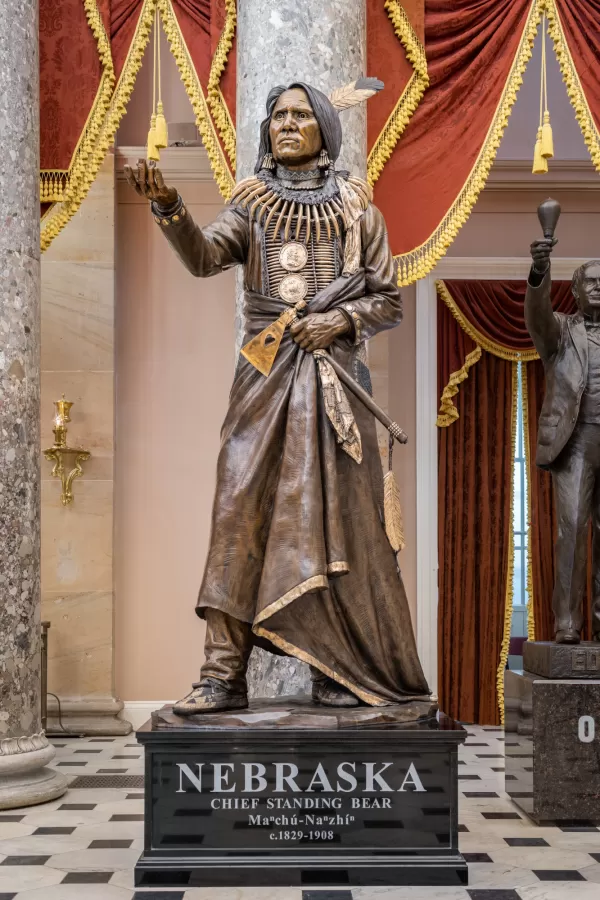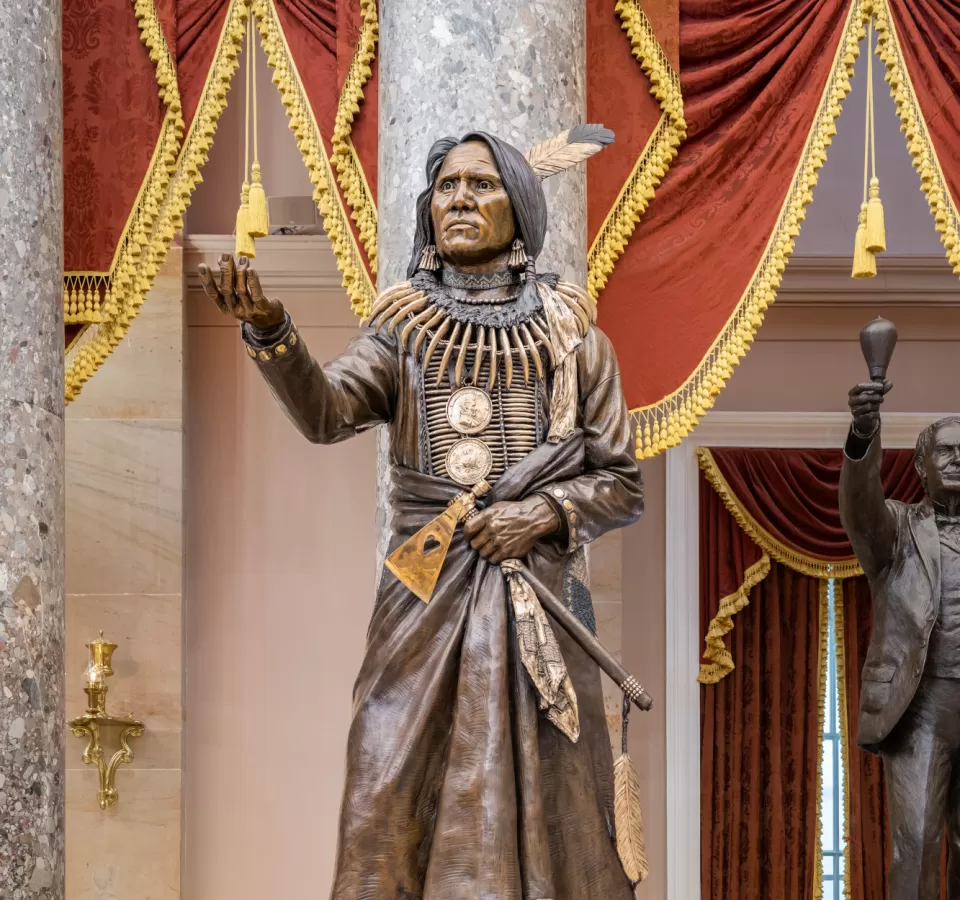This statue of Chief Standing Bear was given to the National Statuary Hall Collection by Nebraska in 2019.
The over-nine-foot statue shows Standing Bear as he might have looked at his trial. An eagle feather adorns his head, signifying that he is a warrior, and his gaze is level and direct. His necklace of bear claws represents the strength and healing power of that sacred animal, and his right arm is outstretched as he asserts that his hand and the judge's hold blood of the same color.
Below his necklace hang two circular medals; such "Indian Peace Medals" or "Presidential Medals" were presented to tribal leaders by the United States Government on ceremonial occasions. These medals loosely depict those created for Presidents James Buchanan and Ulysses S. Grant. The impressionistic rendering redirects the viewer's focus to Standing Bear's native attire. In his left hand he holds a pipe tomahawk; sometimes called peace pipes, these were used in trade or presented as diplomatic gifts. His right moccasin projects forward over the edge of the statue's self-base, and his left is mostly obscured by the drape of his long blanket.
The low, wide pedestal is made of black granite attached to a steel frame. The inscription on the front reads:
NEBRASKA
CHIEF STANDING BEAR
Manchú-Nanzhín
c. 1829–1908
The sides of the pedestal are inscribed with words from Standing Bear's court statement.
The statue was unveiled in National Statuary Hall on September 18, 2019.
Artist
Benjamin Victor (1979- ) initially learned about art from his grandmother, an art professor. He first tried sculpting at Northern State University in South Dakota and fell in love with working in three dimensions. He won his first large commissions when he was still in college, including his first sculpture for the National Statuary Hall Collection. His other works in the U.S. Capitol are: Sarah Winnemucca (Nevada, 2005), Norman Borlaug (Iowa, 2014) and Daisy Bates (Arkansas, 2024). While these statues are all bronzes, he also carves marble and trained with a Florentine master stone carver.
Victor has received national and international recognition, including several awards from the National Sculpture Society. He is artist-in-residence and professor of the practice at Boise State University in Idaho. Victor also maintains a studio where he can carve marble and execute many of the elements in the bronze casting process.
Victor works in both abstract and figurative styles. Even when creating a portrait sculpture, he prefers a conceptual approach, focusing on the spirit of the person and the reason the portrait was commissioned. He edits and refines a sculpture at each step of the modeling process.

